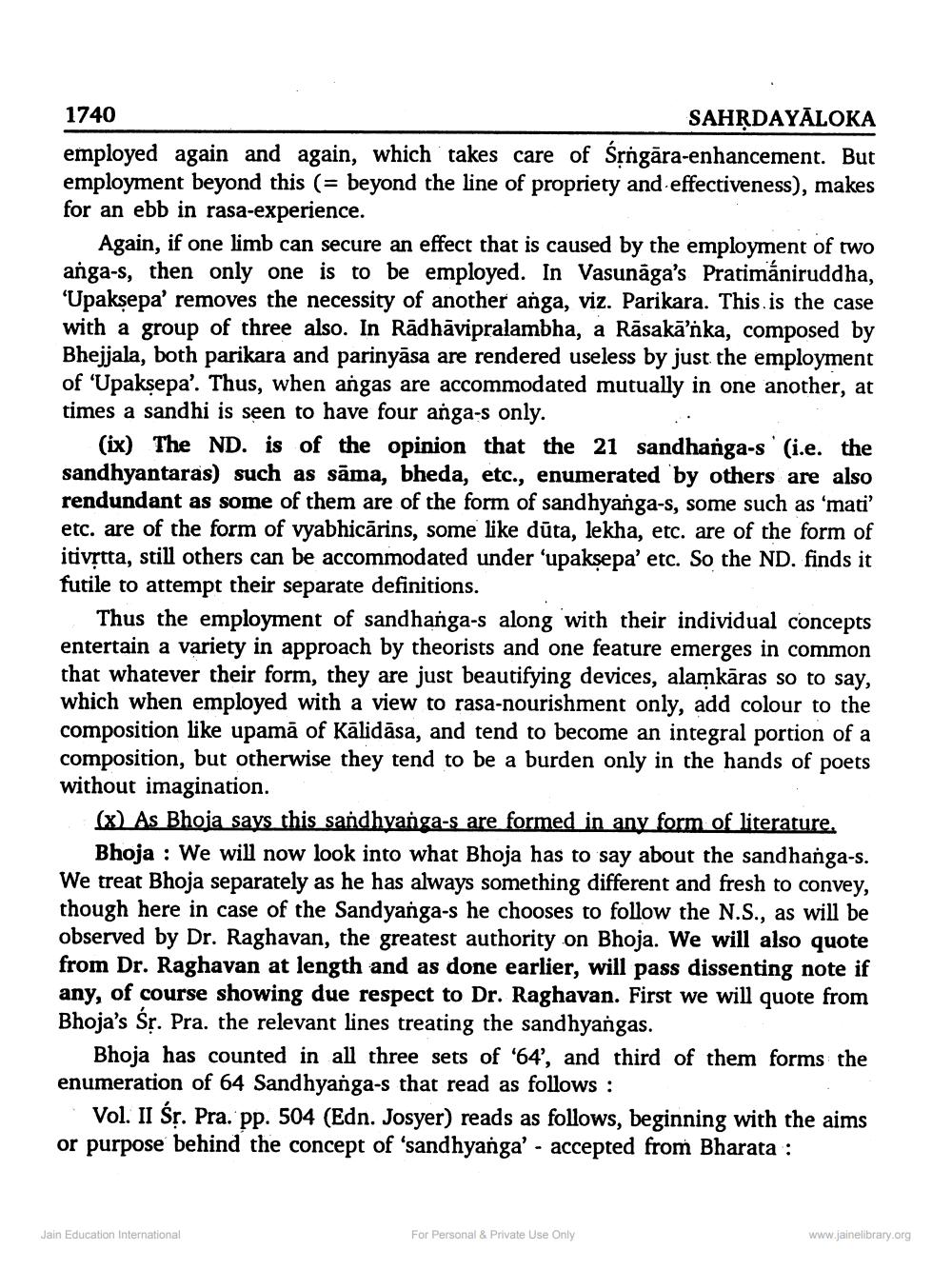________________
1740
SAHRDAYĀLOKA employed again and again, which takes care ngāra-enhancement. But employment beyond this (= beyond the line of propriety and effectiveness), makes for an ebb in rasa-experience.
Again, if one limb can secure an effect that is caused by the employment of two anga-s, then only one is to be employed. In Vasunaga's Pratimániruddha, 'Upaksepa' removes the necessity of another anga, viz. Parikara. This is the case with a group of three also. In Rādhāvipralambha, a Rāsakā’nka, composed by Bhejjala, both parikara and parinyāsa are rendered useless by just the employment of 'Upaksepa'. Thus, when angas are accommodated mutually in one another, at times a sandhi is seen to have four anga-s only.
(ix) The ND. is of the opinion that the 21 sandhanga-s' (i.e. the sandhyantaras) such as sāma, bheda, etc., enumerated by others are also rendundant as some of them are of the form of sandhyanga-s, some such as 'mati' etc. are of the form of vyabhicārins, some like dūta, lekha, etc. are of the form of itivrtta, still others can be accommodated under 'upaksepa' etc. So the ND. finds it futile to attempt their separate definitions.
Thus the employment of sandhanga-s along with their individual concepts entertain a variety in approach by theorists and one feature emerges in common that whatever their form, they are just beautifying devices, alamkāras so to say, which when employed with a view to rasa-nourishment only, add colour to the composition like upamā of Kālidāsa, and tend to become an integral portion of a composition, but otherwise they tend to be a burden only in the hands of poets without imagination.
(x) As Bhoia says this sandhyanga-s are formed in any form of literature,
Bhoja : We will now look into what Bhoja has to say about the sandhanga-s. We treat Bhoja separately as he has always something different and fresh to convey, though here in case of the Sandyanga-s he chooses to follow the N.S., as will be observed by Dr. Raghavan, the greatest authority on Bhoja. We will also quote
m Dr. Raghavan at length and as done earlier, will pass dissenting note if any, of course showing due respect to Dr. Raghavan. First we will quote from Bhoja's Ss. Pra. the relevant lines treating the sandhyangas.
Bhoja has counted in all three sets of '64', and third of them forms the enumeration of 64 Sandhyanga-s that read as follows:
Vol. II Śr. Pra. pp. 504 (Edn. Josyer) reads as follows, beginning with the aims or purpose behind the concept of 'sandhyanga' - accepted from Bharata :
Jain Education International
For Personal & Private Use Only
www.jainelibrary.org




